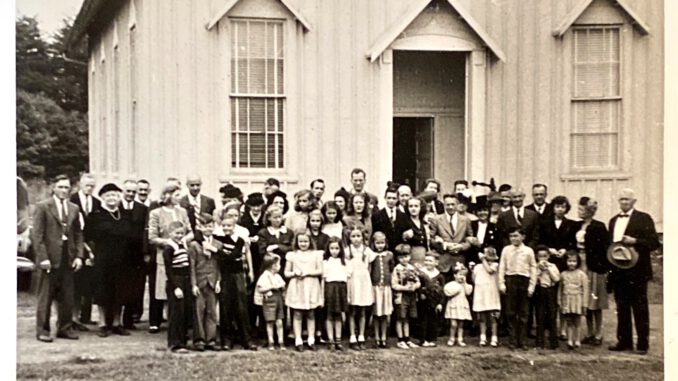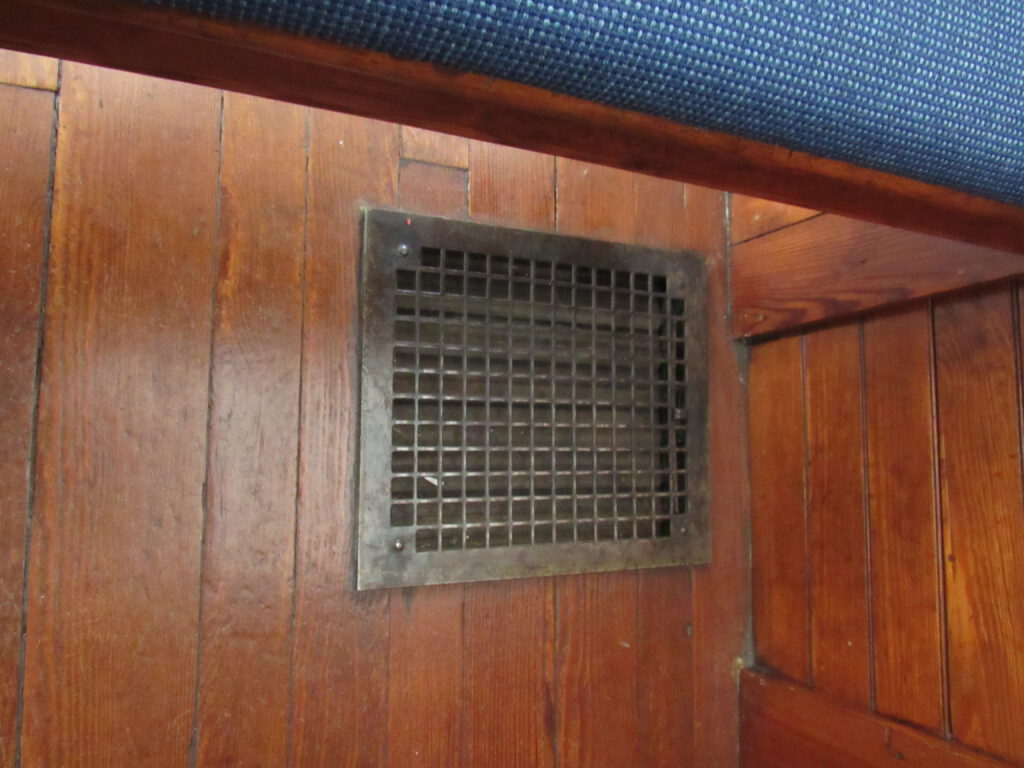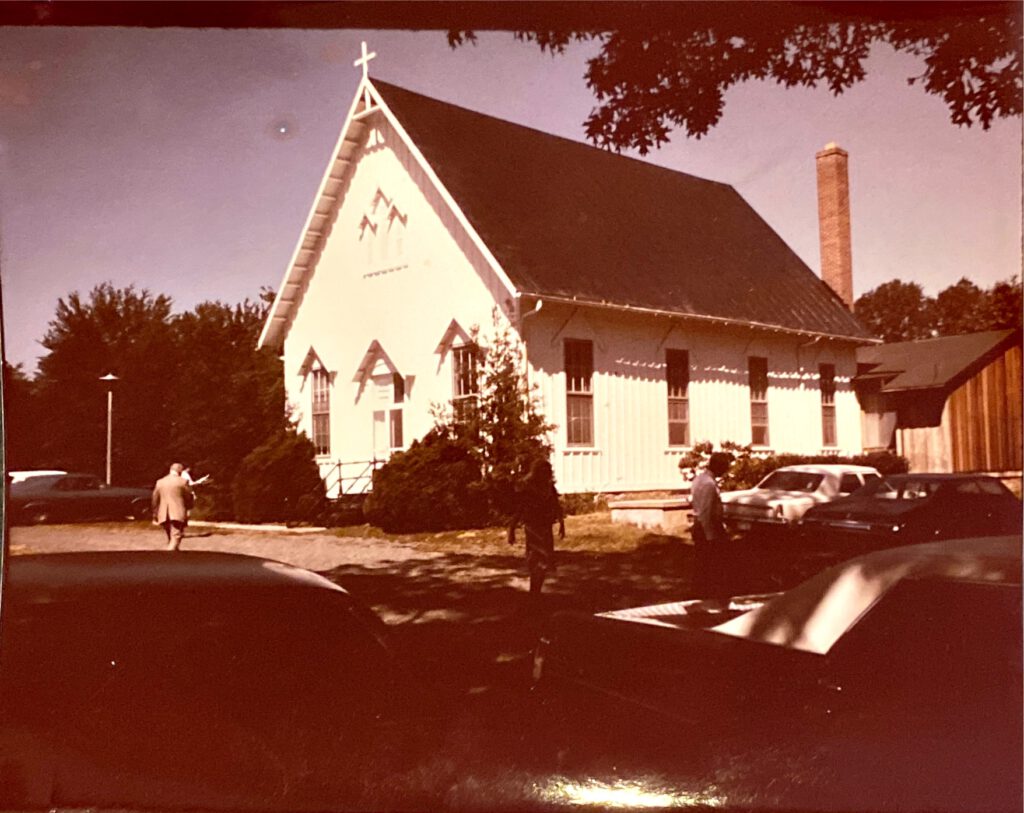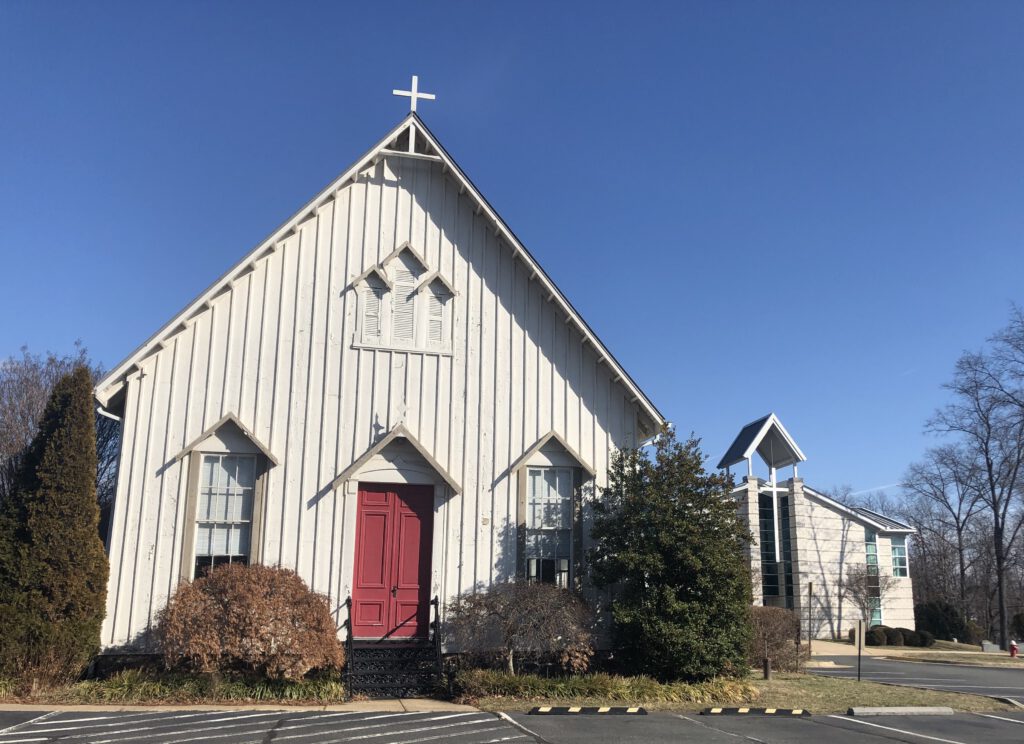
145 YEARS OF WORSHIP
By Jill Devine
About two years ago, Randy Poland put on his Sunday best and drove to a little historic chapel on Ashburn Road to attend his daughter’s wedding. The venue wasn’t a random rental, however. It was the place his family had worshiped for generations – Ashburn Presbyterian Church.
The wedding released a flood of memories for Poland, a 67-year-old retired Loudoun County teacher.
“I grew up in that church,” said Poland, who recalls hot Loudoun summers and no air conditioning. “When I sat in the pews, the varnish would stick to the back of my damp shirt so much I had to peel it away… I remember watching the wasps fly around nests in the ceiling, hoping they wouldn’t swoop down.”
Winters could be challenging. “The thin windows let in cold air, so we sat close to the old heat registers between the pews,” he said. Those old registers are still there in the floors.
Ashburn Presbyterian was founded in 1876 as an offshoot of the Leesburg Presbyterian Church. Upon completion of construction in 1878, the tiny chapel – 33 feet wide by 50 feet long – opened to 23 charter members, and the church has been holding regular worship services for the 145 years since.
“Until the first addition was added, the only bathroom was an outhouse in the back that was heated with a little stove,” Poland recalled. “My [Sunday school] class had about 10 kids, and we met in the basement, which smelled just as musty then as it does now.”
Ashburn Presbyterian is one of the last churches in the Carpenter Gothic style to survive in Northern Virginia. A September 1878 deed states that church trustees purchased the 10.3-acre rectangular shaped parcel of land on which the church and its adjoining cemetery sit from the estate of George Lee for $231.50.
The frame church was constructed of cypress wood and has a steeply pitched gable roof. Electricity was added in 1925. Original plank floors – now covered by carpet – show markings of two long-gone potbelly stoves, which were replaced by ventilated heating systems.
Some original furniture, including a settee, two chairs and a table, remain in place. The pine pews and most of the window panes date back to original construction. The structure’s stone wall foundations are visible both outside and in the basement.
As Ashburn grew, so did the church – with new additions for classrooms, offices and multipurpose spaces. A new, larger sanctuary was added in 2002.
Today the old chapel is used only occasionally – usually for things like weddings and Scout meetings.
“You can’t talk about Ashburn Presbyterian without mentioning my great aunt Ruth,” said Poland, referring to longtime parishioner Ruth Judd who passed away in 2003.
Ruth Judd was a dear friend of Patti Krzywicki, who lives in Ashburn’s Courts and Ridges neighborhood.
“Ruth usually sat in the pew three rows from the front on the right side, and we called her the ‘Lady in Red,’ because she always came to church dressed in bright red clothing,” said Krzywicki, who has been a member of the church for 22 years. “I will never forget the sight of Ruth driving her tractor from her house down Ashburn Road every other Saturday to cut the church’s grass.”
Judd was one of the leading proponents behind having the church listed on the National Register of Historic Places. Along with Poland and others from the congregation, the paperwork was pulled together, submitted and success! Ashburn Presbyterian Church was officially listed on the registry in 1999.
At the same time, Judd co-authored a short history of the church. The dedication on the booklet is a bit of foreshadowing: “It is the author’s intent . . . that future generations will know and preserve the legacy of the Ashburn Presbyterian Church. As a key part of that legacy, it is vital that the historic sanctuary be maintained in its original state.”
Keeping the original chapel in its original state is easier said than done.
“Our resources are stretched serving the community and members in many ways,” said pastor Robert Zemke. “We would love to make better use of the chapel down the road, and opinions of how we should do that vary, but right now we would be happy to at least keep up with basic care.”
The church recently applied for a grant to have the chapel exterior painted. But the grant was denied because the estimate to do the job was deemed too high at $25,000.
“Because it involves the removal of lead paint, the project requires specialized equipment and a level of expertise that exceeds what volunteers or youth can do,” Krzywicki explained. “Without funds, we can’t begin improvements… there’s a special beauty in this place, so I think it will just stay the way it is until we can figure out what to do.”
Jill Devine is a freelance writer and former magazine editor from Loudoun County who writes for a variety of Virginia publications.



